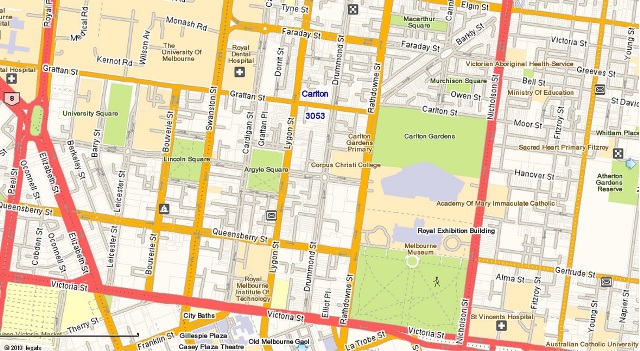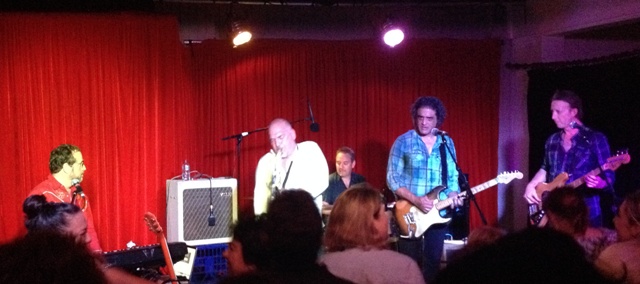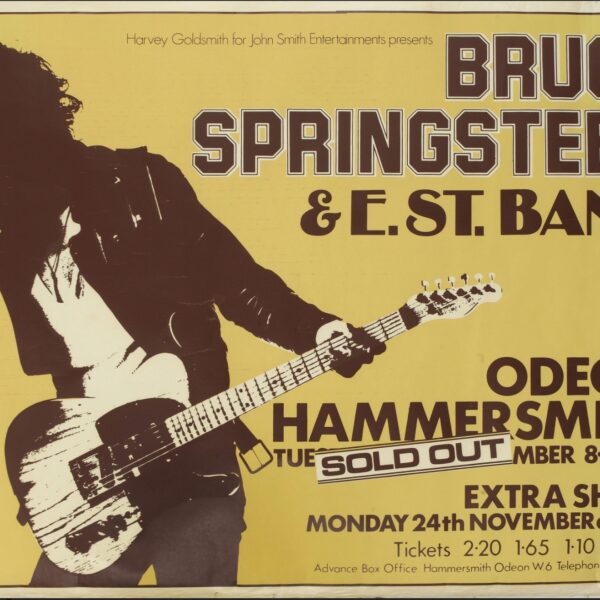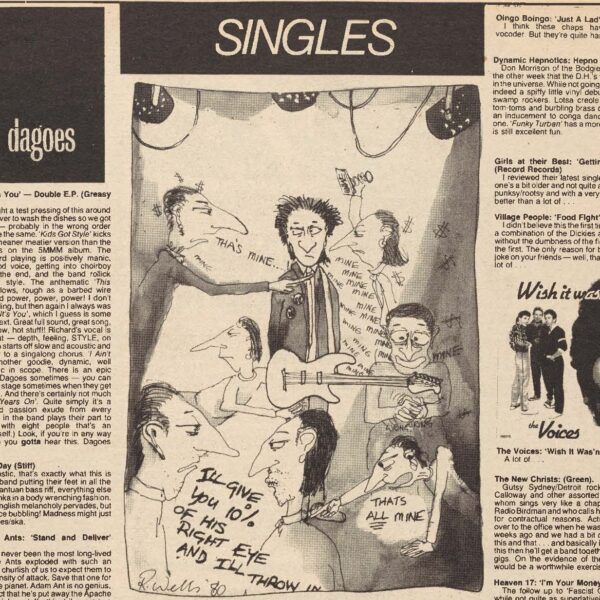When the sun sets over Carlton
It was one of those memorable car trips. Driving to Coogee last Friday night with Ralph and Hilary Kerle and Greg Taylor to see Joe Camilleri and the Black Sorrows and listening to the new compilation (When the Sun Sets Over) Carlton – Melbourne’s Countercultural Inner Ciy Rock Scene of the ’70s. Unusually for three such grizzled veterans of the rock’n’roll circus as Greg, Ralph and myself, none one of had ever been to Coogee Diggers, so it was one of those journeys punctuated by ‘Do we turn here?’ interspersed with, ‘Is this Stephen Cummings?’
I’ve never lived in Melbourne and for most of the period covered by this superlative collection I wasn’t even in Australia. In early 1975, aged 21, I left for the UK with the back-to-my-roots mission of working out why my parents had made the decision to emigrate to the steel town in the desert called Whyalla. Skyhooks—whose Carlton (Lygon Street Limbo) opens proceedings here and immediately pins down the place and time—were already huge. By the time, two and a half years later and through the worst economic downturn in Britain since the end of World War II, I’d worked my parents’ decision out, the Carlton scene so lovingly curated here was facing the late seventies new wave that had been detonated by punk. Many of the luminaries of the scene—Steve Cummings, Martin Armiger, Joe Camilleri, Paul Kelly and John Dowler—caught the wave and surfed, with varying degrees of success, the golden era of Australian pub rock (roughly 1978-86). Others—from Skyhooks to the supremely talented but massively idiosyncratic Mick Conway and the Captain Matchbox Whoopie Band—were pretty much dumped by the sets of breakers rolling in.
Lobbing back into Adelaide in late 1977, I was wild-eyed and evangelical about the British and American new wave that had happened all around me—and that had been comprehensively chronicled in the UK music press (in particular NME and Sounds) and a blooming garden of DIY fanzines. I serendipitously met fellow enthusiast Stuart Coupe and we decided to produce a punk fanzine (Street Fever) that morphed into Roadrunner.
What Dave Laing and Jen Jewel Brown have done brilliantly on (When the Sun Sets Over) Carlton is join together all the dots and strands of this fecund, incestuous and spectacularly creative scene.
The live scene in Adelaide was pretty healthy then and many of the leading lights of the Carlton scene were happy to drive over the border and ply their trade at the Arkaba, Marryatville, Tivoli and other Torrens-side palais de danse. The High Rise Bombers, Paul Kelly’s first band, came west and my housemate Larry introduced me to poet/saxophonist Keith Shadwick, who on the Bombers’ demise decamped to the Old Dart and became Roadrunner’s London editor. The Sports—both the Ed Bates and then the Martin Armiger versions—were frequent visitors, Stiletto too. Jo Jo Zep and the Falcons fronted by the irrepressible Joe Camilleri always put on a monster live show (more of Joe shortly). And John Dowler returned to his hometown after the demise of Spare Change and started Young Modern, calling on old mate Steve Cummings to produce a self-financed single She’s Got the Money that was an enticing calling card for the movers and shakers of the east coast rock business.
On record too, compilations like Debutantes (Oz Records 1977) and Missing Link’s Inner Sanctum (Missing Link 1979) collected together some of the half-forgotten treasures of the era. Debutantes was a collection of (mainly) Ross Wilson-produced tracks, featuring The Sports, Stiletto, Mark Gillespie and others, while on Inner Sanctum Keith Glass assembled independent recordings from Bleeding Hearts, The Pelaco Bros, Relaxed Mechanics and the Millionaires plus emerging new wave artefacts like the aforementioned She’s Got the Money.
This is antipodean rock archaeology at its finest.
What Dave Laing and Jen Jewel Brown have done brilliantly on (When the Sun Sets Over) Carlton is join together all the dots and strands of this fecund, incestuous and spectacularly creative scene. Not just in the unerring selection of recordings, but in the mini-bios, essays, photos and reproduced posters in the enclosed booklet. If you think ‘booklet’ in terms of ‘small book’ you’ll be close to the mark. Like Dave Laing’s other absolutely masterful compilation of Australian country rock/singer songwriters Boogie: Silver Roads (Festival 2013)—a collaboration with ex-Roadrunner editor Clinton Walker—this is antipodean rock archaeology at its finest.
Back to Joe. I hadn’t seen the Man on stage for over thirty years, but when the band hit the opening notes at the cosy Coogee Diggers it was obvious this was a performer who still had it. Shaven-headed, fit, playing a wide-bodied guitar or painted saxophone and with a hot four-piece combo behind him, Joe treated the enthusiastic crowd to highlights of his forty-year career, with it must be said, the selections from the latest Black Sorrows album Certified Blue more than holding their own with the back catalogue.
Black Sorrows at Coogee Diggers
But inevitably it was the Jo Jo Zep classics like Shape I’m In and Hit and Run, the early Sorrows’ hits like Harley and Rose and Chained to the Wheel, the Van Morrison covers Brown Eyed Girl and On The Bright Side of he Road and in honour of our current visitors, even a Stones chestnut, Honky Tonk Women, that had the crowd cutting the rug on the dance floor.
When it was all over, Joe was signing copies of Certified Blue vinyl albums at the front desk. I went up and introduced myself, ‘Donald Robertson, Roadrunner Magazine’. I could see the flash of recognition in his eyes. ‘Donald, mate, how are you going? You still writing?’ ‘Yeah, still writing Joe.’ ‘Well, tell them about this .’ ‘Sure Joe, will do. Great show.’ Joe smiled and turned back to signing albums.
Still out there doing it.






